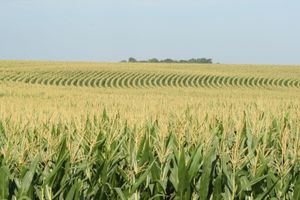A Price Paradigm Shift for Corn Is Coming, Analyst Says
 As the effects of COVID-19 continue to be felt around the world, prices for commodities, and perhaps more so for corn, suggest a paradigm shift is at hand.
As the effects of COVID-19 continue to be felt around the world, prices for commodities, and perhaps more so for corn, suggest a paradigm shift is at hand.
A paradigm can be defined as a pattern or a model. If there was a reasonable expectation for corn prices to trade between $4.25 and $3.50 on the December futures in 2020 pre-coronavirus, a loss of demand and increase in acres would now suggest this 75¢ range shift downward. New expectations could be for $3.50 to $2.75 from this point onward. The only “unless” in the foreseeable future is if weather reduces production.
Corn is in a difficult spot. The destruction in demand is due to a collapsing energy complex that has either shut down or shuttered an estimated 140 of 206 ethanol plants. While circumstances may change, the longer the country is only partially working (and for that matter, the world), excess supplies of crude oil and ethanol will likely continue to pressure prices, both in cash and futures. On April 24, December corn closed under $3.40 and likely will target $3.00 in the weeks ahead if planting continues at a fast clip. Unlike last year, the end of April and early May were struggle points for producers, when a weather bomb cyclone followed by unseasonably cool and wet weather allowed for a price recovery. There is no sign of a repeat of too wet in the near-term forecasts.
The growing reality is that the abundance of energy products suggests it will take months before a price recovery is likely. Yes, ultimately, low prices will cure low prices. Never in history, however, has the market had to contend with collapsing demand and expectations of increasing corn supplies as farmers, as of March 31, are expected to plant 97 million acres, up over 7 million acres from last year. This is ultimately problematic for corn prices. The question facing producers is whether they should do nothing to protect new-crop prices because they are well below the cost of production, or expect even lower prices and, therefore, defend the market dropping another 50¢ or more.
At this point in time, it is not a matter of right or wrong, as there are no easy decisions. If you have storage space, perhaps plan to store and not worry about declining prices for now. Instead, concentrate on selling your crop after it is harvested. Forward contracting doesn’t make sense at current prices, as you will lock in a price below what it takes financially to produce it. It may be advantageous to purchase put options or consider a fence strategy, where you purchase a put and sell a call. The short call could become a short futures if exercised. If selling a December $3.70 or $3.80 call, there may be some merit to accepting a hedge at that level, at least, compared with today’s offering. If we are, in fact, in a paradigm shift for the year ahead, the choice to defend prices may make more sense.
As you navigate the uncertainty of prices ahead, make sure you understand the risks and opportunities before entering into any strategy. Seek help from a professional who can help you determine what is best for your situation.
———————-
If you have questions or comments, contact Top Farmer at 1-800-TOP-FARMER, extension 129. Ask for Bryan Doherty.
Futures trading is not for everyone. The risk of loss in trading is substantial. Therefore, carefully consider whether such trading is suitable for you in light of your financial condition. Past performance is not necessarily indicative of future results.
Source: Bryan Doherty, Agriculture.com
